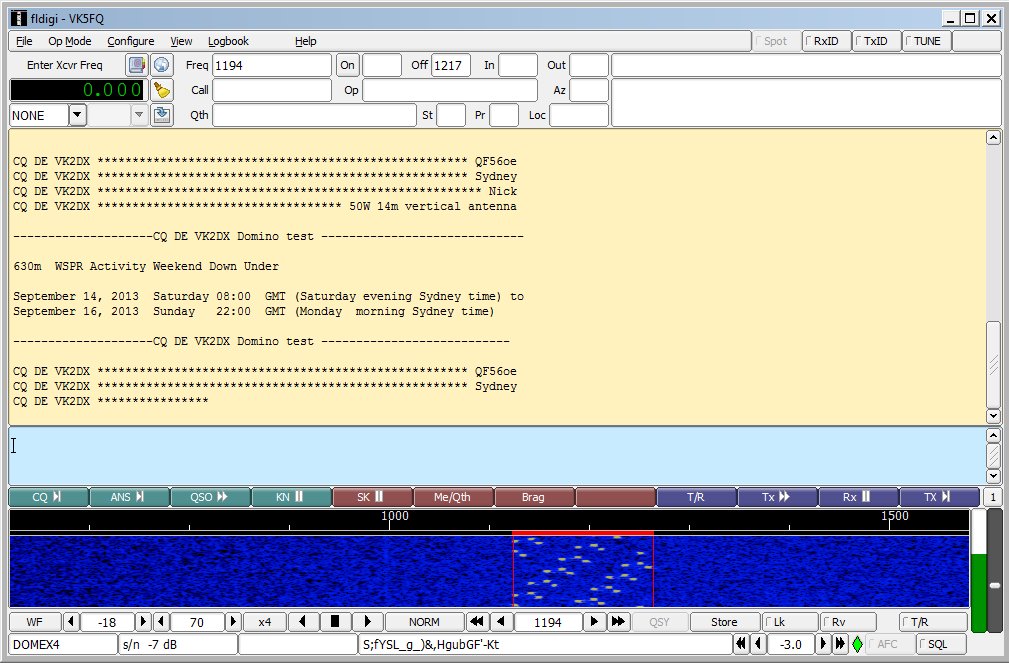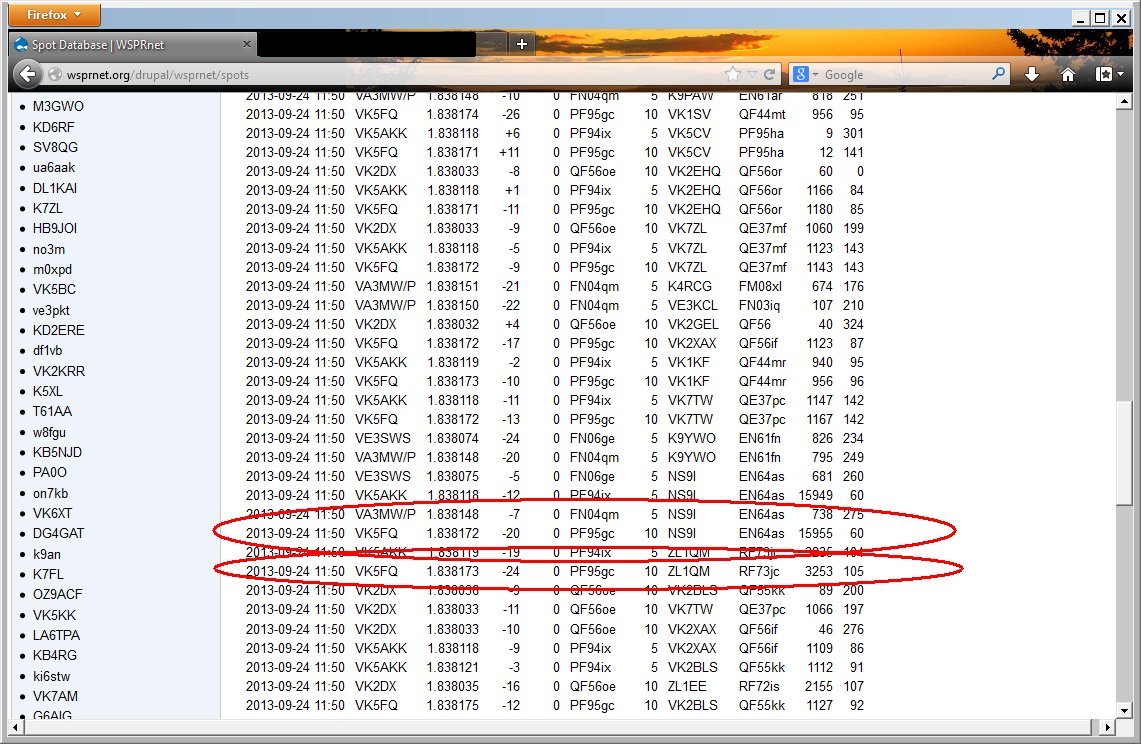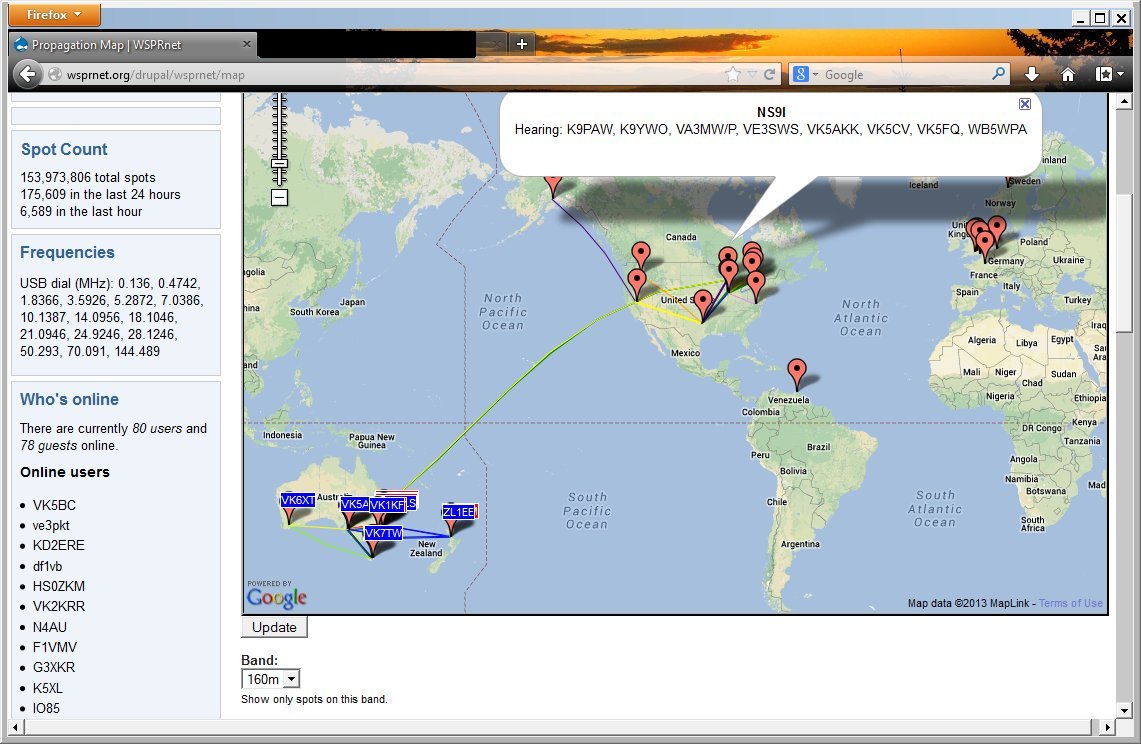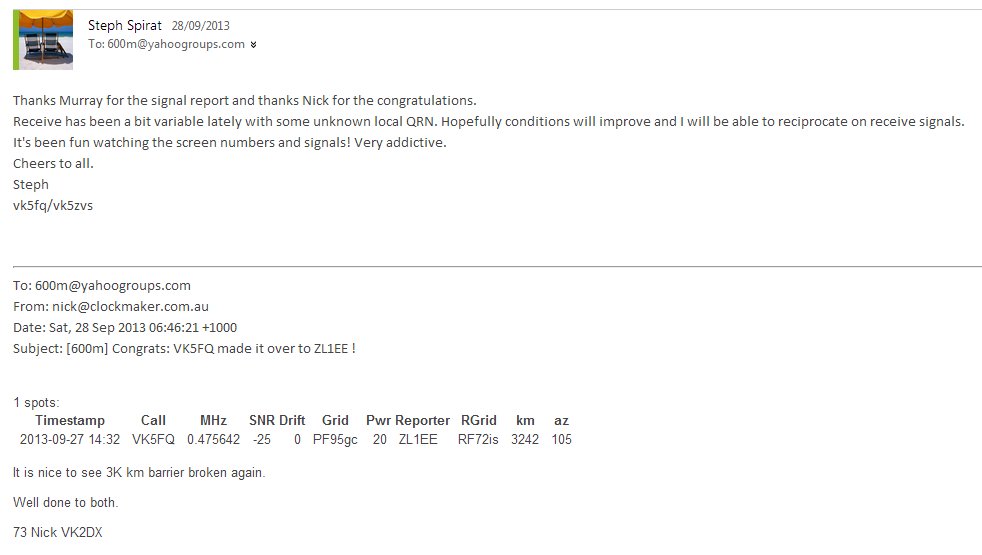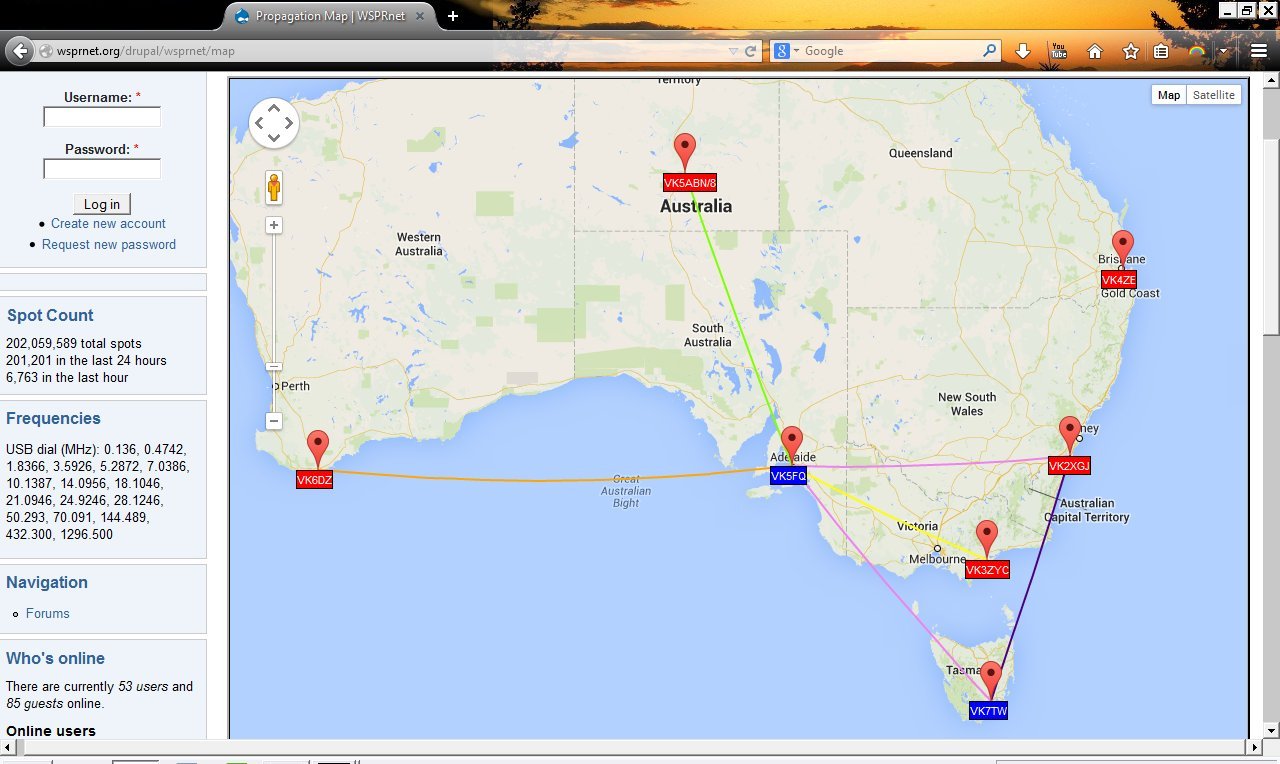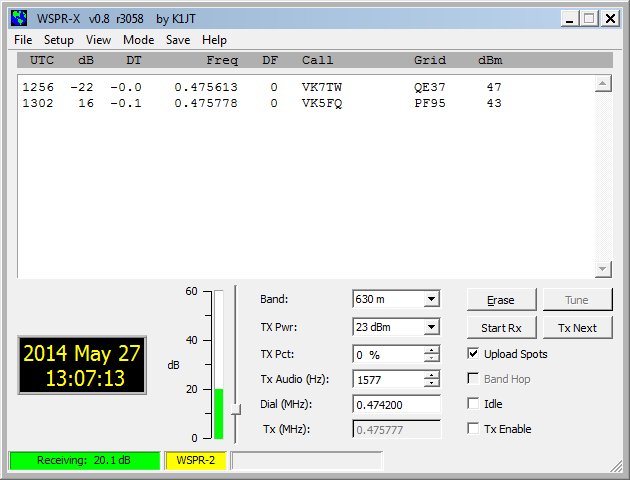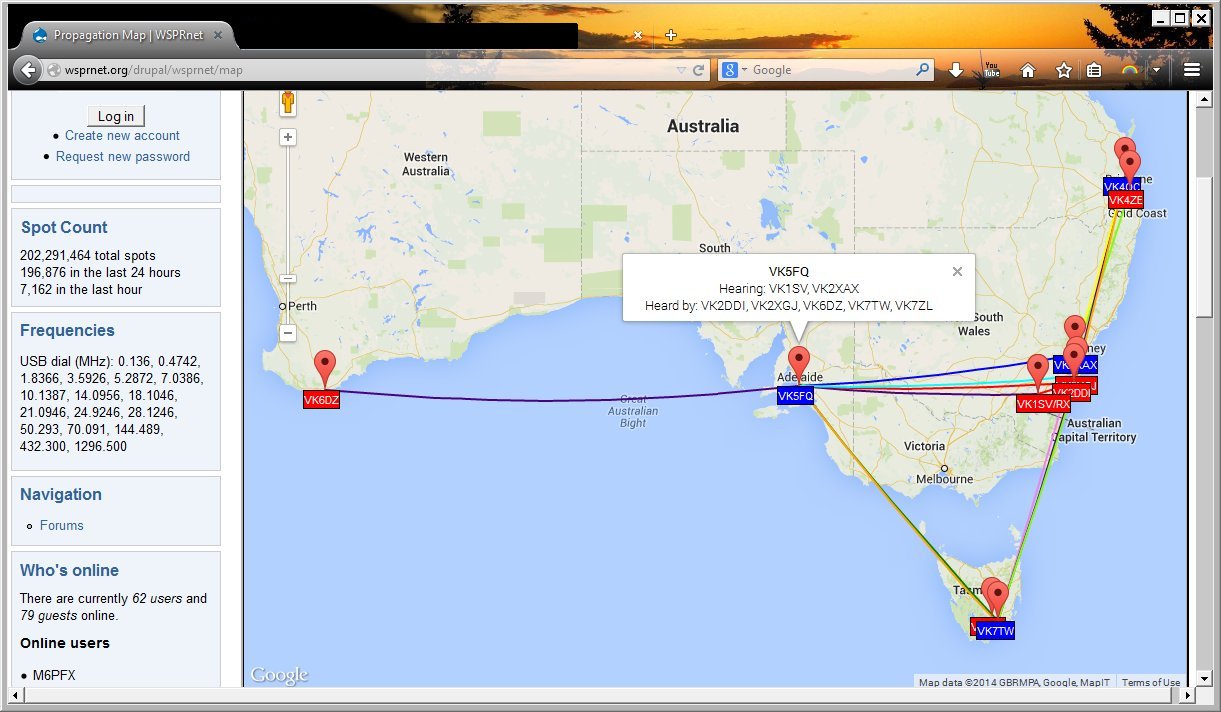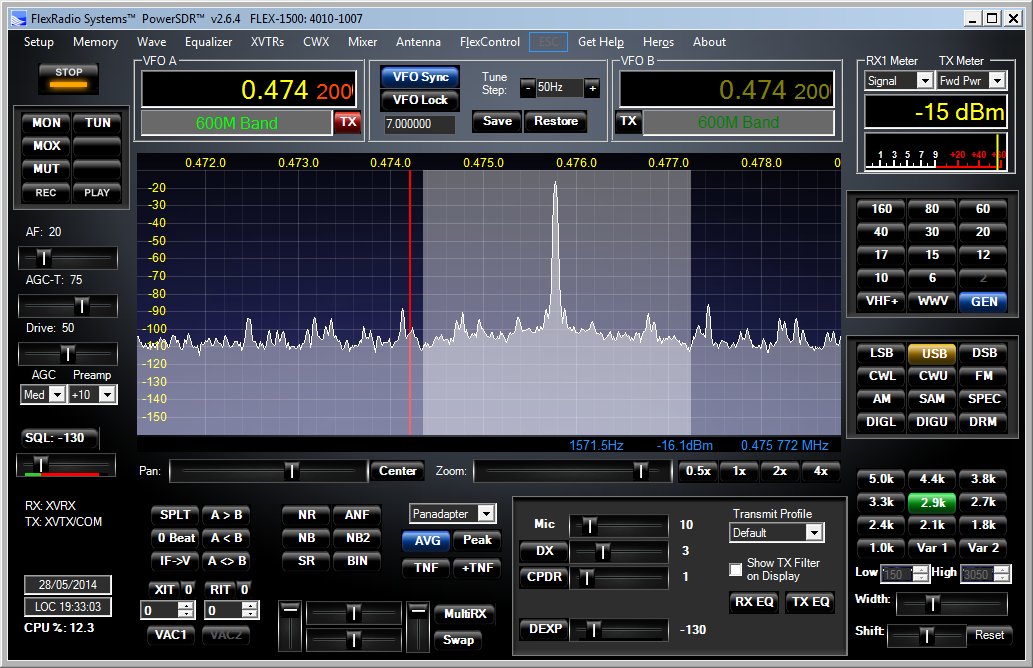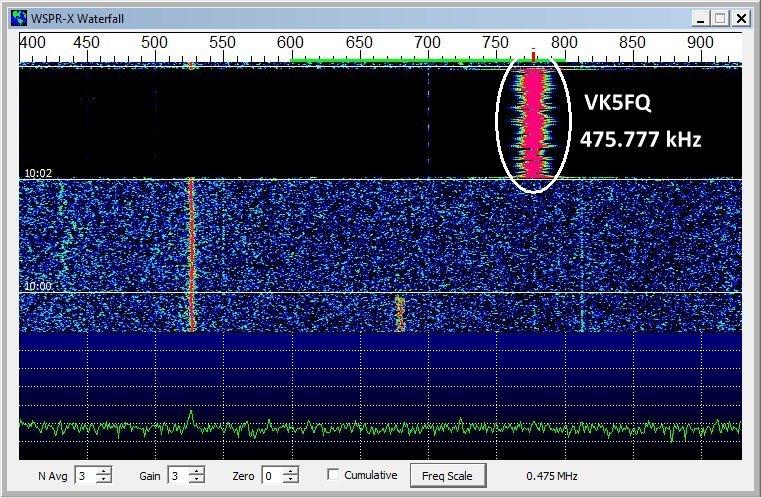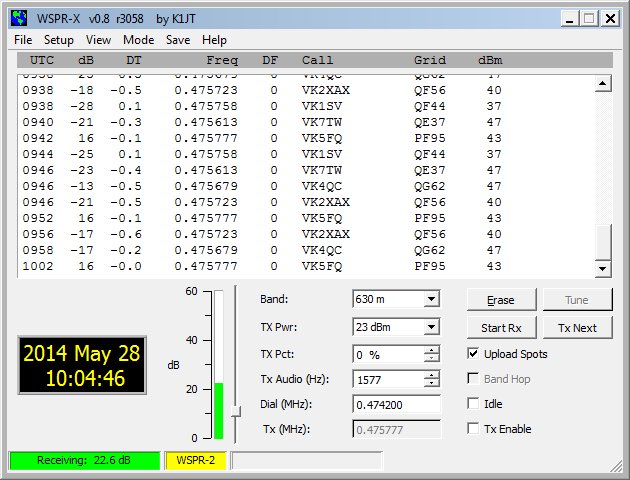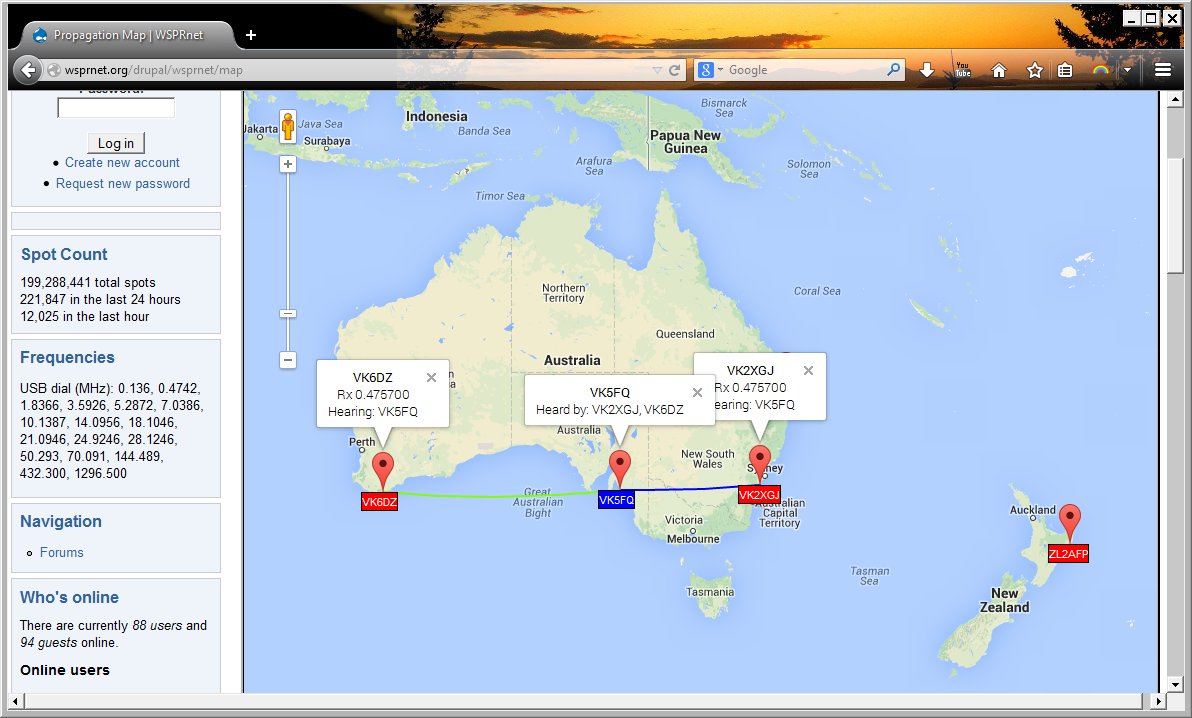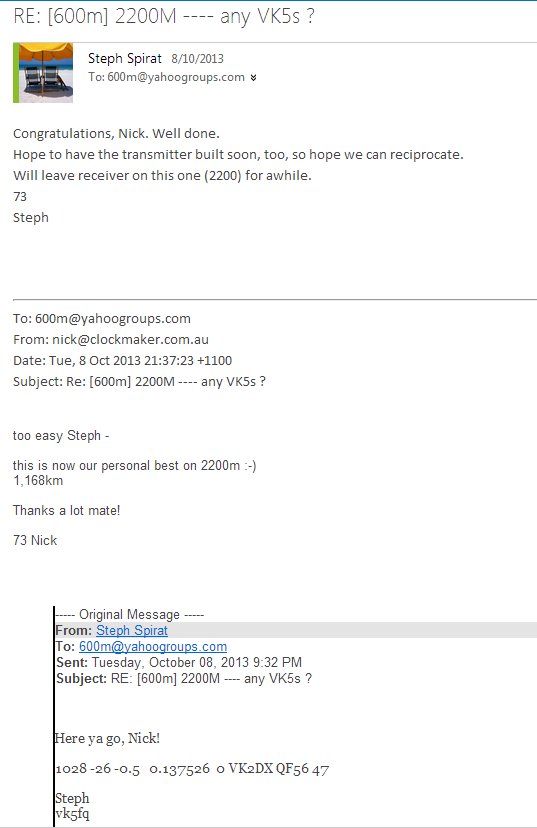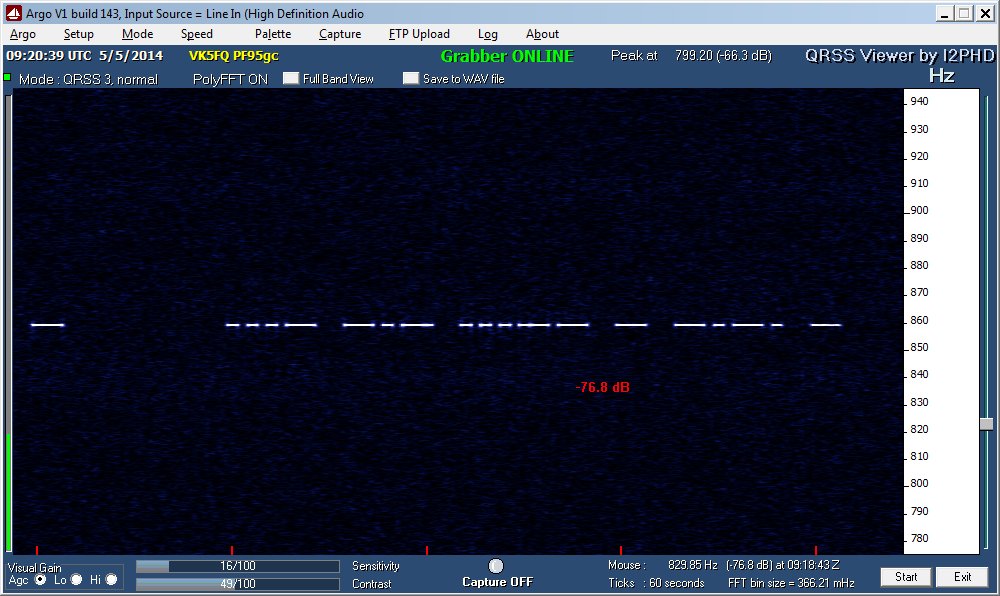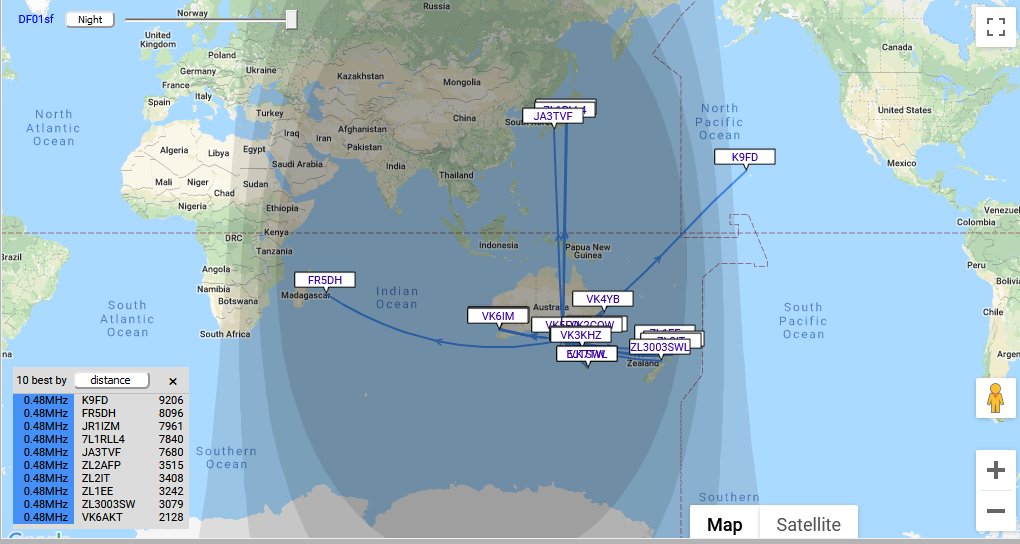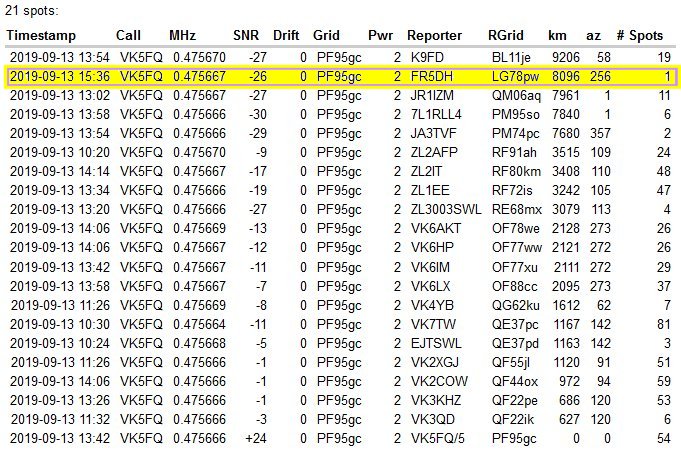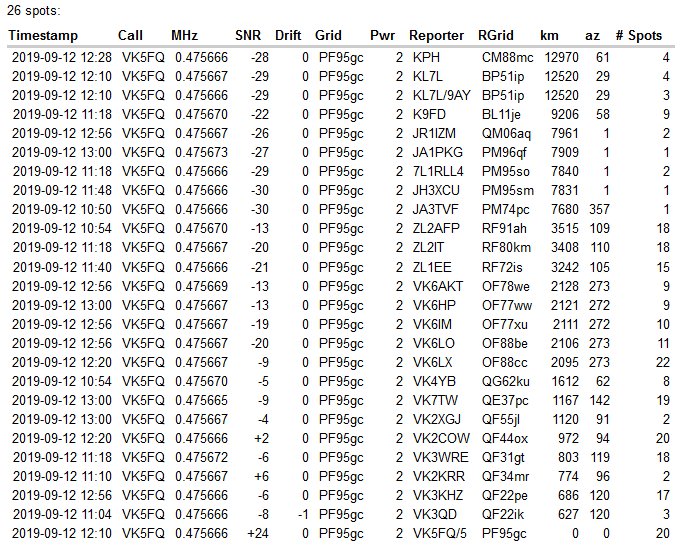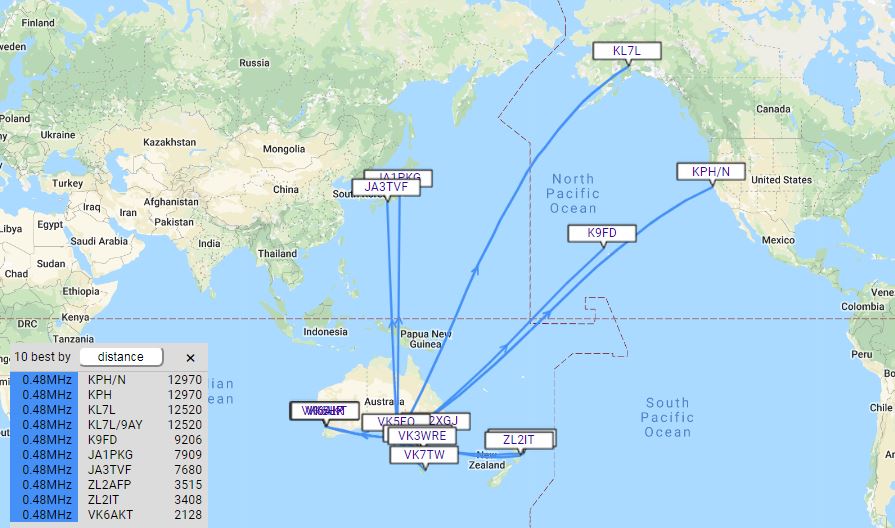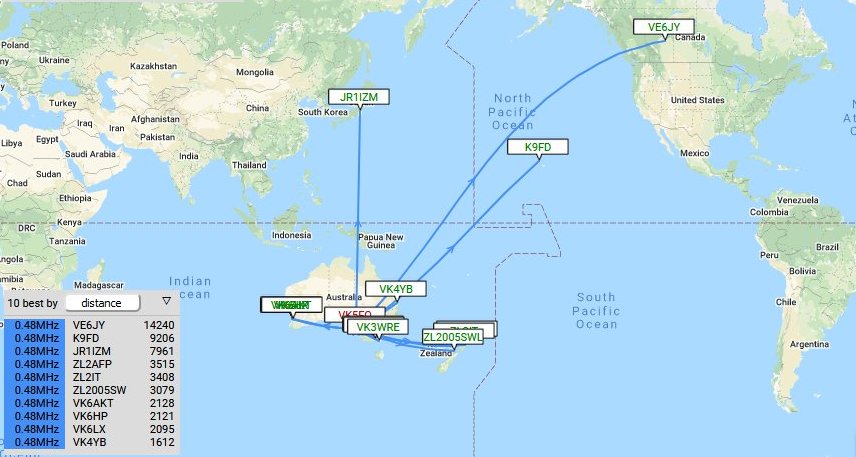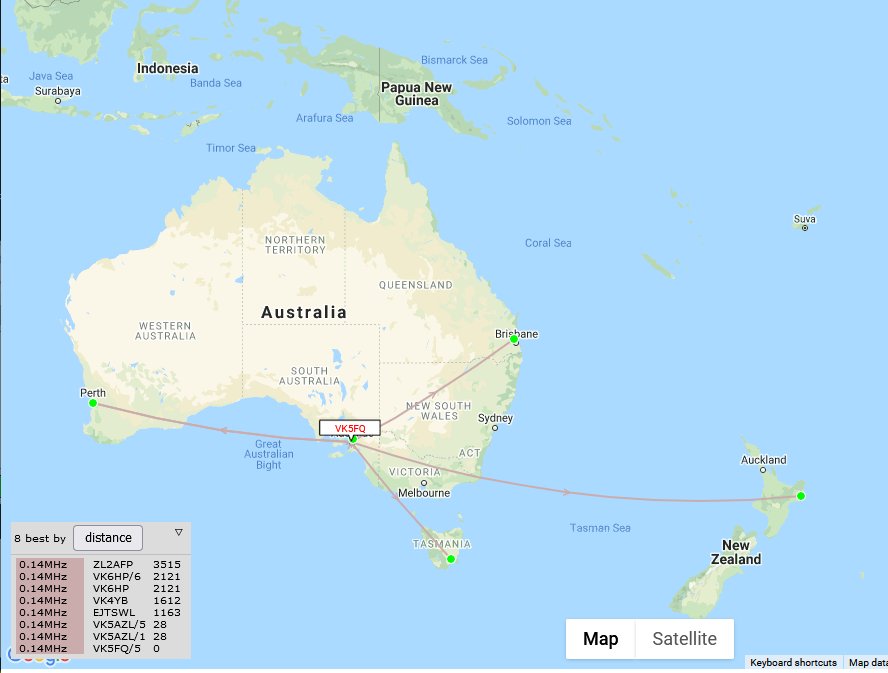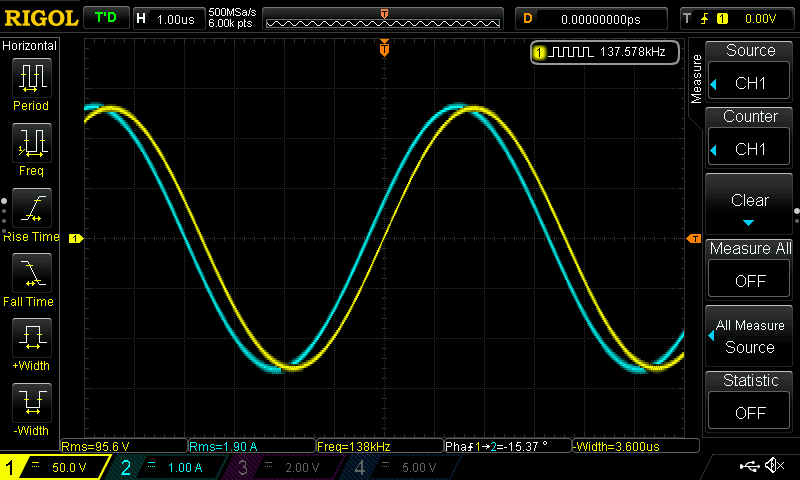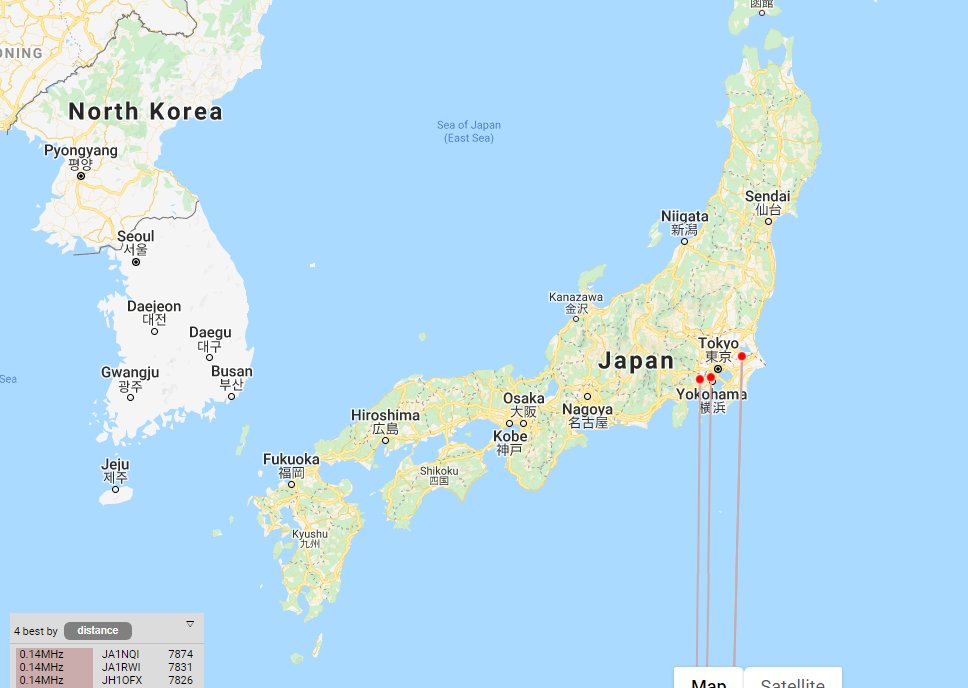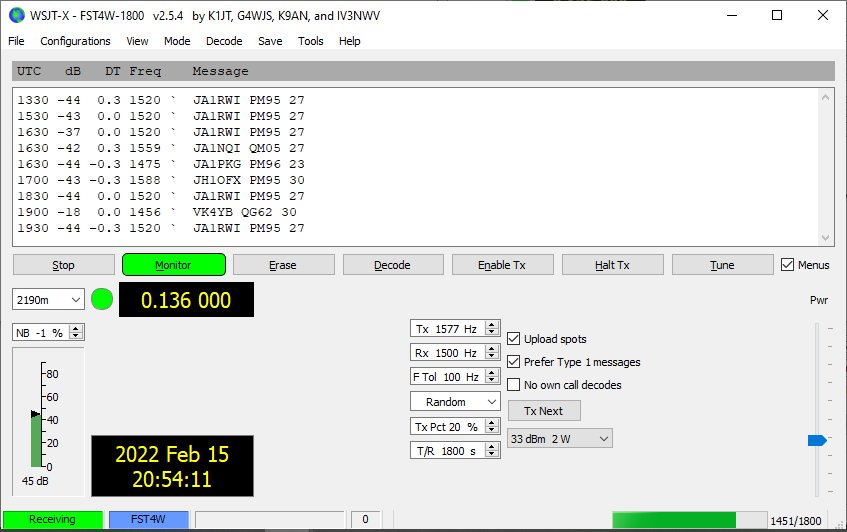Some digital modes on MF & LF
Get ready...
It's hard enough, at times, using SSB and CW modes on the HF ham bands, where most signals can be heard and communications with other
stations from around the world can be done with moderately sized antennas and reasonable power levels. When operating in marginal conditions
an alternative is available. The use of some clever software and interfacing with existing communications equipment, may allow the average user
to continue to communicate with others around the world, even when the signals are inaudible. There is a plethora of software available and I choose only to name a few here, where communications on the newer MF and LF bands that have become available but, due to lack of antenna size for these bands (630m and 2200m) digital techniques are often employed to enhance communications with fellow hams.
CW decoding
Although CW is considered by some, not to be a digital mode, it can be generated and decoded by digital means. Most transceivers have this mode available to the operator and is usually decoded as an audible signal via the speaker or headphones. Likewise, the transmission is achieved via a morse key or paddle operated also by the operator.
Connect the audio output of the transceiver to the sound card input on a computer along with the sound output of the computer to the microphone input of the transceiver and we are almost there. To implement the push-to-talk, PTT, on the transceiver, we generally have an interface box of some description to allow the computer to control the transceiver via computer software control. There may be some buffering of signals and/or galvanic isolation included in this interface box, used to condition the signal to and fro', so the speaker and microphone/data leads may pass through this box also.
To decode Morse Code, any number of programs are available. Selection may be based upon ease of use, receive only or whether transmit may also be required. The text is normally entered via keyboard and commonly used text messages may be stored in an editable memory location that is usually accessed and recalled for transmission via a "soft key" as used in, say, contesting events.
Some programs I have used included the Terminal program, as part of both the Elecraft K3 and KX3 Utility software (free download). Probably not much chop if you don't have either of those radios!
FLDIGI - Fast and Light Digital Modem program. This free software allows both transmit and receive, has CW and other digital modes, provides capture, waterfall and text decode display. Quite amazing software.
Another program that may be a bit advanced for some, is DM780. Digital Master 780 also has CW and other digital modes along waterfall and text decode screen.
Argo is a QRSS/DFCW viewer. Slow morse and other digital modes is supported, along with waterfall display, screen capture and file upload capabilities.
This is by no means any real list of any sorts, just a sample of a few I have come across and as with all software, hands on configuration is generally required.
WSPR - Weak Signal Propagation Reporting
Yes. 160m is in the MF band of frequencies. 3 to 30 MHz is classed as HF and 300 kHz to 3 Mhz is classed as MF. 30 Khz to 300 kHz is LF.
As an aside, this is why 160m was not included the high power trials conducted in Australia as the trial was listed for the HF bands...! No one requested the 160m allocation in the MF band! Doh! Could this have been a Homer Simpson moment?
Back to WSPR. Well, it is a form of communications, of sorts. Yes, you do need the internet if you want to upload reports. You don't have to but it helps others if you can do this as it may means that conditions may be favourable for other modes of communication, yeah? This is exactly what does happen. Fellow hams send emails to individuals or groups and arrange "skeds" (scheduled contacts) at certain times usually pre-arranged and mutually convenient. We're all hoping for a successful contact. Especially if we are using any of these more "exotic" modes. Still a load of fun. So, WSPR does require critical timing, accuracy to within or less than one second. Apart from that, not a lot of power, it seems. Most stations are operating QRP levels and achieving amazing results. A good way to test propagation at different times and testing antenna efficiencies. It is good to see who else is on the band and where they are located.
WSPR on 630m #2
Short lived top score. This what spurs some of us on. Oh, well. Good while it lasted!
WSPR on 630m #3
Seen in five other states using 20 watt transmitter. Missed Queensland and the A.C.T.
Other modes...
Some other modes that seem popular at the moment are QRSS (plain on/off keyed slow morse),
FSK/CW (frequency shift keyed slow CW), DFCW (dual frequency CW, dits and dahs on different frequencies),
Slow-Hellschreiber (frequency shifted slow Hellschreiber), Hellschreiber, Domino and customable FSK patterns.
WSQ2 is another specific program design by Con, ZL2AFP, for two way communication on both LF and MF bands. It allows
two way chat with on screen text decode and waterfall. There are certainly a lot of clever people with clever skills.
Ok. That's it for the moment. Hope to add some more detail as time permits...
*** UPDATE 21-09-2019 ***
Last few weeks have been busy with the main mast being re-built due to a severe weather incident which broke the top 6 metre section clean off! A new wooden mast was built and painted and erected. The results have proved worthwhile. Although there was some minor re-tuning required (due to slight height gain), the performance was as good as before and possibly a little better.
WSPR to Reunion Island
My 630m signal was spotted by Pascal, FR5DH, on Reunion Island only 8096km away!
That's it for the moment... till next time!
*** UPDATE 18-05-2020 ***
With the onset of the winter season, the conditions become more favourable for night time SSB QSOs. Sometimes, it is easy to achieve and sometimes one forgets to record the conversation for others to witness or enjoy while partaking in the actual event. I only just managed to remember to record the end of a recent contact with Roger, VK4YB, in Queensland 1612 kilometres away. It may be a short clip but it captured the essential contact details and on air audio quality received at my location that night.
|
Snippet of the end of a 630m SSB chat session on 479kHz LSB. |
|---|
That's it again, for the moment... till next time!
*** UPDATE 11-02-2022 ***
Seems to be a continued progression of amateur activity both locally (Australia) and North America towards the 2200m band. So, I built another PA and controller and joined in with some of the new digital modes. Mind you, it probably is the wrong time of year, but what the heck. Gotta warm things up for the coming winter months. Things may get a bit more interesting then ...
That's it again, for the moment... till next time!
*** UPDATE 22-02-2022 ***
No sooner than typing up the previous paragraphs, what pops up on the 2200m receive screen...! Not just one. Several Japanese stations decoded on screen. Things are hotting up closer to winter. Hopefully, further afield, too.
That's it again, for the moment... till next time!
